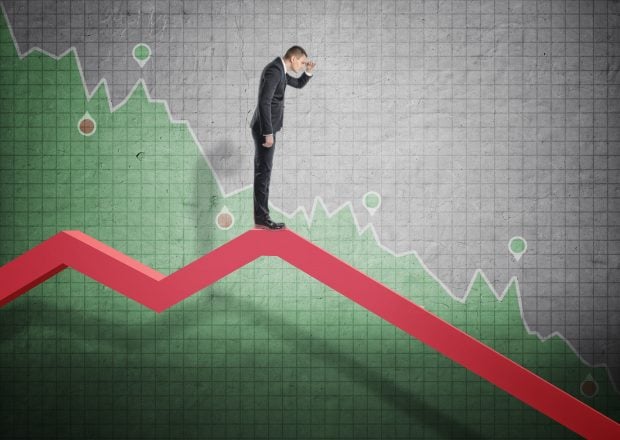 Credit/Adobe Stock
Credit/Adobe Stock
Like a can being kicked down the road, the Mortgage Bankers Association again is predicting a recession is likely in the first half — this time the first half of 2024.
However, NAFCU Chief Economist Curt Long said Monday he still thinks the chances of a recession in the next 12 months are less than 50%.
Recommended For You
The forecast presented Sunday at the MBA's annual convention in Philadelphia also shut down the fourth-quarter mortgage rebound party. It lowered fourth-quarter originations by 9.3%, delaying the start of year-to-year gains until 2024's first quarter.
The MBA now said it expects $399 billion in fourth-quarter mortgage originations, down 2.4% from a year earlier.
The MBA also lowered forecasts for 2024 by 4.8% and for 2025 by 4.3% — but both will be rebound years. It now said it expects total originations to rise 19% to $1.95 trillion in 2024 and rise 16% to $2.25 trillion in 2025.

Chief Economist Mike Fratantoni said the U.S. economy has been resilient throughout 2023, but the MBA is forecasting a mild recession in 2024's first half in the wake of higher interest rates, tighter credit conditions and a depletion of pandemic-era household savings.
 Mike Fratantoni
Mike Fratantoni "Both fiscal and monetary policies have contributed to the much higher level of mortgage rates in 2023," Fratantoni said. "The Fed's hiking cycle is likely nearing an end, but while Fed officials have indicated that additional rate hikes might not be needed, rate cuts may not come as soon or proceed as rapidly as previously expected."
"Lower rates should help boost both homebuyer demand and increase the inventory of existing homes, thereby supporting purchase origination volume in 2024," he said.
Fratantoni said he expects the job market to slow in early 2024, with fewer jobs added and the unemployment rate rising from 3.8% in September to 5.0% by the end of 2024. He said expects inflation to gradually fall toward the Fed's 2% target by the middle of 2025.
The MBA updates its forecasts monthly, usually without comment except for the October annual meeting. The monthly updates showed the recession the MBA predicted in October 2022 to occur in early 2023 crept forward and waned to a downturn. The forecast presented Sunday showed a deepening of two consecutive quarters of decline in gross domestic product in next year's first half.
In the MBA's Sept. 18 forecast, GDP was expected to fall 0.1% from 2023's fourth quarter to 2024's first quarter and fall 0.3% in 2024's second quarter. The Oct. 15 forecast showed GDP falling 0.3% in the first quarter and falling 0.4% in the second quarter.
Typically two consecutive quarters of declining GDP are ultimately labeled a recession, but the last instance was not deemed a recession when GDP fell 1.6% in 2022's first quarter and fell 0.6% in the second quarter.
As the MBA revised its first half GDP expectations downward, it raised them substantially for this year's third quarter. Its Sept. 18 forecast showed a 2.7% gain in GDP from the second quarter to the third quarter, while its Oct. 15 forecast showed a 4.8% gain.
Long, the NAFCU economist, said third-quarter GDP is expected to be exceptionally strong, which does mathematically increase the likelihood of a decline in the subsequent quarter — but not enough to predict a recession.
"There's some slowing in the economy that's probably in store for us in the next few quarters" — but not enough to predict a recession, Long said.
 Curt Long
Curt Long But Long said inflation is coming down and the Fed is unlikely to raise rates further.
"Overall, we're still positioned for a soft landing," Long said.
The MBA was also déjà vu all over again on 30-year fixed mortgage rates. A year ago the MBA predicted rates would fall to 5.4% 14 months hence — December 2023. In Sunday's forecast, the MBA predicted mortgage rates will fall to 5.5% in December 2024.
In the meantime, mortgage rates were 7.53% for the week ending Sept. 29, and the MBA forecast they will fall to 6.1% by Dec. 31.
As the economy slows and inflation moves lower, Fratantoni said longer-term rates will decline from current levels, helping to bring mortgage rates lower. However, the spread between mortgage and Treasury rates remains roughly 120 basis points wider than typical.
MBA Deputy Chief Economist Joel Kan said first-time homebuyers will account for a large portion of housing demand over the next few years, given the largest age cohort entering its prime homeownership ages.
But Kan said buyers will be paying higher prices as tight inventory supports price growth. They will face other challenges, including persistently high interest rates, low credit availability and scarce for-sale inventory, particularly for entry-level homes.
 Joel Kan
Joel Kan Data from the MBA's Builder Applications Survey has shown solid year-over-year gains in purchase applications in recent months.
"New home sales continue to be stronger than existing-home sales, as buyers increasingly turn to newly constructed homes given the dearth of existing home listings and how competitive the bidding process still is.," Kan said.
Marina Walsh, the MBA's vice president of industry analysis, said 2023's production losses will continue through next spring for lenders.
"Excess capacity continues to be a challenge for mortgage lenders, with low productivity levels and high expenses per loan," Walsh said. "Lenders have reduced their head counts and gross expenses, but the record-low volume is a primary driver of these escalating per-loan costs."
 Marina Walsh
Marina Walsh A year ago, the MBA estimated mortgage industry employment would need to drop 30% from peak to trough, given the decrease in production volume. The MBA now estimates that the industry is roughly two-thirds of the way there.
"On the servicing side of the business, low delinquencies and prepayments means that servicing net operating income has risen in 2023, enabling many lenders to stay profitable overall," Walsh said. "In 2024, delinquency rates are likely to increase as unemployment increases and borrowers are stressed by increasing property taxes and insurance and the resumption of student debt payments."
© 2025 ALM Global, LLC, All Rights Reserved. Request academic re-use from www.copyright.com. All other uses, submit a request to [email protected]. For more information visit Asset & Logo Licensing.








